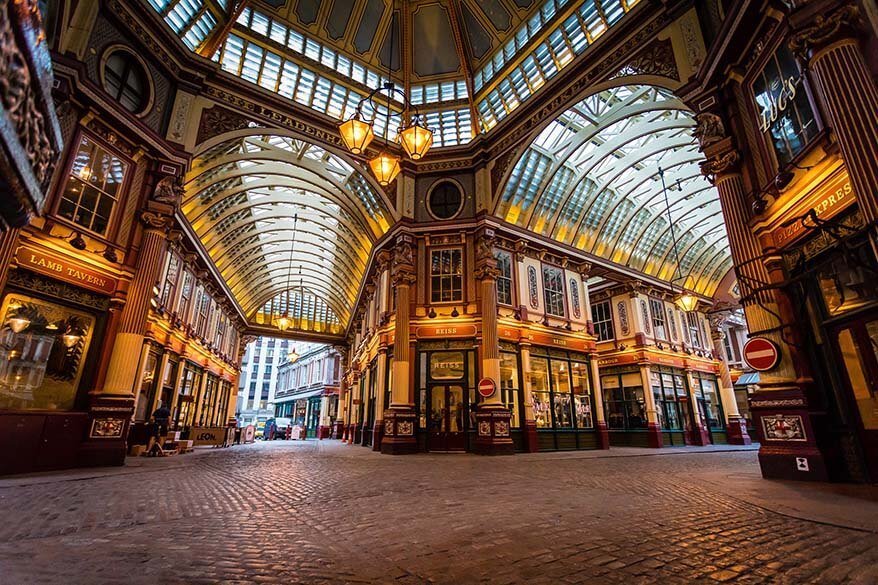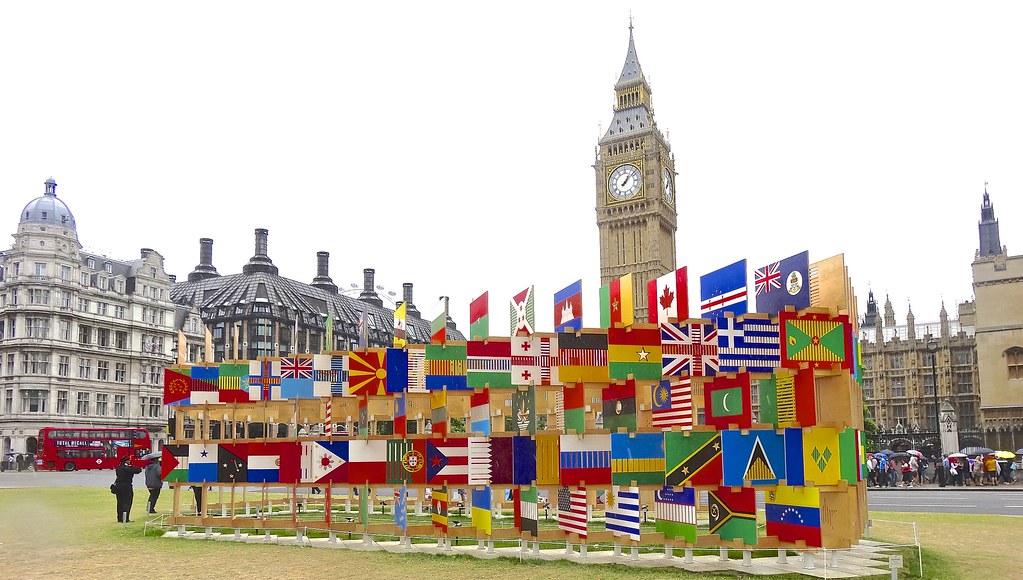Go Non-Touristy Guide to Visiting London:
A Local’s London: Hidden Corners, Honest Tips, and the Best Times to Go
London isn’t all Big Ben, Buckingham Palace, and red phone boxes. The real charm lives in its quiet corners, lived-in pubs, seasonal street markets, and multicultural neighborhoods. If you’ve already seen the postcards, this guide takes you deeper. You’ll get the tools to avoid crowds, connect with local life, and enjoy London without ticking off a list.
Too many visitors rush from attraction to attraction. They miss the layered culture that locals move through every day. London isn’t a museum. It’s a working, shifting city where you can hear ten languages in one Tube ride, taste five cuisines in a single market, and stumble into a historic pub on a side street without a sign.
This guide is about how to explore that version of London. It focuses on the real pace of the city, the places Londoners love, and the best times to experience them. You’ll find hidden gems, honest seasonal tips, local customs, and the kind of advice you’d only get from someone who lives here. Whether you’re coming for a long weekend or a longer stay, this post will help you travel with more insight and less stress.
Discover the best London experiences at GoTicketless.co.uk

Hidden Gems and Lesser-Known Attractions
Most visitors stay above ground, but London’s secrets often lie beneath. The Mail Rail at the Postal Museum lets you ride an old underground mail train below the city. Not far off, the Eel Pie Island artist commune on the Thames near Twickenham opens to the public only a few weekends a year. Time it right, and you’ll get a rare look at an eccentric riverside subculture.
While Camden draws crowds, nearby Regent’s Canal Towpath offers a quieter walk to Little Venice. Along the way, grab a flat white from Towpath Café near Haggerston, where locals linger all morning. If you’re into literature, visit Dr Johnson’s House tucked away in Gough Square. It’s a compact tribute to the man who compiled the first English dictionary, complete with creaking floors and handwritten notes.
For panoramic views without queues, skip the London Eye and head to Primrose Hill at sunset or the Garden at 120 Fenchurch Street. Both offer striking skyline views and fewer crowds. You’ll also meet more Londoners than tourists, especially in spring and autumn.
Cultural Events by Season
London’s cultural calendar is packed all year. Yet many of the most authentic experiences fly under the radar. In January, avoid the high street sales and head to Cervantes Theatre in Southwark for contemporary Spanish-language plays, often subtitled in English. February brings Vault Festival, held in tunnels beneath Waterloo Station. This fringe arts festival offers experimental theatre, comedy, and immersive performances, often for under £20.
Spring (March to May) sees the Oxford and Cambridge Boat Race, which draws locals along the Thames, especially around Hammersmith. April’s Open Garden Squares Weekend gives rare access to private gardens across London, hidden behind residential facades.
Summer (June to August) gets busy, but events like Greenwich+Docklands International Festival offer free outdoor theatre and art, away from typical tourist spots. In September, join locals at Open House London, when private buildings and architectural landmarks open to the public.
In autumn, visit Bloomsbury Festival for local music, art, and debate in literary central London. As winter returns, head to Wilton’s Music Hall for traditional music, candlelit shows, and Victorian atmosphere, far from the West End.

When to Visit: Best and Worst Seasons
Spring and early autumn are the sweet spots. From mid-April to early June, flowers bloom across parks, crowds are thinner, and daylight stretches late into the evening. Expect temperatures between 10°C and 18°C. Layers are essential, especially a windproof jacket.
September and October are equally pleasant. The parks glow with orange leaves, museums are quieter, and restaurants launch seasonal menus. This is when London breathes again after summer’s rush.
Summer (July and August) can feel overwhelming. Though the weather is warmer, with highs around 25°C, the Tube gets stifling, and accommodation prices peak. Avoid the South Bank and Westminster areas during weekends.
Winter (December to February) is a mix. Christmas lights and markets are lovely, especially in areas like Seven Dials or Hampstead Village. But January and February often bring drizzle, grey skies, and early sunsets. Still, you’ll find deals on hotels and fewer crowds at major sites.
Avoid visiting during school holidays (especially mid-February, late May, and late October) unless you’re travelling with children.
Weather by Month and What to Wear
London weather changes quickly. Locals often dress in layers and carry compact umbrellas year-round.
- January to March: Cold, often wet, 3°C to 10°C. Bring a waterproof coat, warm scarf, gloves, and good boots.
- April to June: Mild, variable, 10°C to 20°C. A trench coat or medium jacket works well. Add layers like a jumper or long-sleeve shirt.
- July to August: Warm, sometimes humid, 18°C to 26°C. Light clothes, sunglasses, and breathable shoes are best. The Tube is hot, so avoid thick fabrics.
- September to October: Cool, breezy, 12°C to 19°C. A light jacket, jeans, and waterproof shoes will suit most days.
- November to December: Cold and often damp, 4°C to 10°C. A wool coat, thermals if sensitive to cold, and sturdy walking shoes are helpful.
Rain is possible anytime, but rarely extreme. Instead of heavy downpours, expect mist or drizzle that lingers.

Must-Do’s When Visiting London
- Ride the Thames Clipper instead of a tourist boat. It’s cheaper, faster, and used by locals.
- Explore a neighborhood market. Try Broadway Market (Hackney), Maltby Street Market (Bermondsey), or Exmouth Market (Clerkenwell) for great food and local character.
- Visit a free museum. The Wellcome Collection, Sir John Soane’s Museum, and the Horniman Museum offer quirky exhibits in peaceful settings.
- Take a walking tour with a niche focus. Look for ones on grime music history in East London, immigrant food cultures in Brixton, or street art in Shoreditch.
- Spend a few hours in a London park. Hampstead Heath and Richmond Park both feel wild and expansive. Bring snacks, watch the deer, or go for a cold swim if you’re brave.
- Visit a pub during off-hours, like weekday afternoons. Pubs such as The Grapes in Limehouse or The French House in Soho offer real atmosphere when quiet.
Must-Not-Do’s When Visiting London
- Don’t take the Tube for short distances. Use contactless payment on buses for cheaper, more scenic rides.
- Don’t stand on the left side of the escalator. Always stand right or walk left.
- Don’t queue jump. Londoners queue in silence and take it seriously.
- Don’t eat in chain restaurants near Leicester Square or Oxford Street. Instead, head to areas like Soho, Peckham, or Dalston for better, cheaper food.
- Don’t carry large notes when shopping in markets or small shops. Use cards or smaller denominations.
- Don’t over-plan. Leave time to wander, explore alleyways, or sit in a café and watch London pass by.

Cultural Considerations
London is diverse and direct. People generally respect personal space, especially on public transport. You’ll rarely be approached by strangers, and small talk with strangers is not common unless you’re at a pub or event.
Tipping is optional but polite in restaurants with table service. Round up or add 10 to 12.5 percent unless service was poor. In pubs, tipping is not expected, though it’s appreciated if ordering food.
Try to avoid talking loudly in public, especially on the Tube. Phones should be on silent. In general, keep to yourself unless invited to chat.
Respect for time is also cultural. Arriving 5 to 10 minutes early is considered polite for social or business meetups.

What to Eat and Drink Beyond Fish and Chips
Forget clichés. London’s food scene is global and ever-evolving. You’ll find some of the best Indian food outside India in Southall, with dishes like chole bhature, masala dosa, and lamb biryani served in family-run restaurants.
Explore Eritrean cuisine in Brixton, where injera flatbread and spiced stews are eaten by hand. Head to Golders Green for kosher delis or to New Malden for Korean barbecue. London’s diversity means every borough has a food identity.
For modern British fare, try places like St John (nose-to-tail dining) or Brat (open-fire cooking). You’ll also find great food at street markets. Head to KERB in King’s Cross or Pop Brixton for affordable, high-quality meals.
Drinks-wise, skip the tourist pubs and try local breweries in Bermondsey or taprooms in Hackney Wick. Many serve natural wine, craft beer, and small plates. Tea lovers should head to Postcard Teas near Bond Street for rare, small-batch leaves.
And yes, have fish and chips once,but get it from Poppie’s in Spitalfields or Toff’s in Muswell Hill, not a chain.
Off-the-Beaten-Track Places to Eat
1. Bánh Bánh (Peckham)
-
Why go: Run by five siblings using their grandma’s Saigon recipes, this tiny spot serves authentic, flavorful Vietnamese food in a casual setting. It’s busy with locals, not tourists.
-
Must-try: Crispy pork belly with nước chấm, and the pho.
-
Average spend: £12–£18 per person
2. Needoo Grill (Whitechapel)
-
Why go: This no-frills Pakistani grill house rivals famous Brick Lane spots but with better value and far more locals than tourists. It’s open late and perfect for curries and grilled meats.
-
Must-try: Lamb chops and chicken karahi.
-
Average spend: £10–£15 per person
3. Mien Tay (Hoxton)
-
Why go: A family-run Vietnamese restaurant that’s been quietly serving Hoxton locals for years. No décor gimmicks, just honest, home-style cooking.
-
Must-try: Goat curry with lemongrass and chilli.
-
Average spend: £10–£16 per person
4. E. Pellicci (Bethnal Green)
-
Why go: A Grade II-listed Italian café that’s been around since 1900. Full of character, with charming staff and loyal regulars. It feels like stepping into someone’s kitchen.
-
Must-try: Full English breakfast or lasagne.
-
Average spend: £8–£12 per person
5. Xi’an Impression (Highbury)
-
Why go: Tucked beside the Emirates Stadium, this small spot serves bold, spicy dishes from northwest China. It’s famed among foodies but still largely skipped by tourists.
-
Must-try: Biang biang noodles and beef pancakes.
-
Average spend: £12–£18 per person

Final thoughts on visiting London:
Don’t try to do it all. Let the city unfold naturally.
London is one of those cities that rewards curiosity, patience, and attention. You can visit once and only scratch the surface, or return many times and always find something new. While the landmarks are iconic, the everyday life of the city is where you’ll find the richest moments.
Spend more time walking than queuing. Skip the obvious and look for the local. Whether it’s a quiet bookstore, a neighborhood pub, or a park bench with a view, these small details add up to a deeper understanding of London.
Be flexible with your plans, ask locals for recommendations, and take time to enjoy the slower, less commercial sides of the capital. That’s where London becomes more than a destination. It becomes a city you’ll want to return to.



